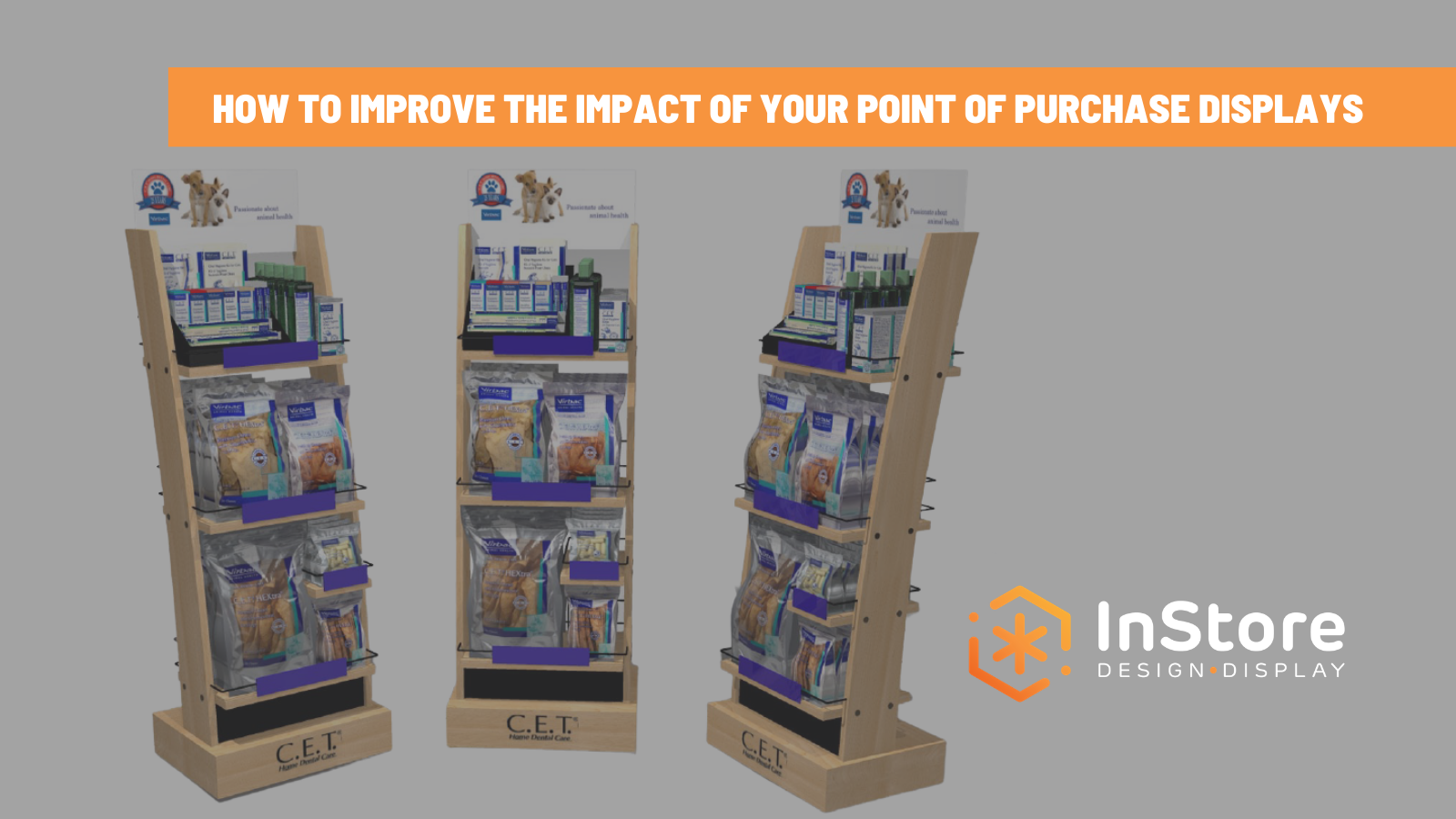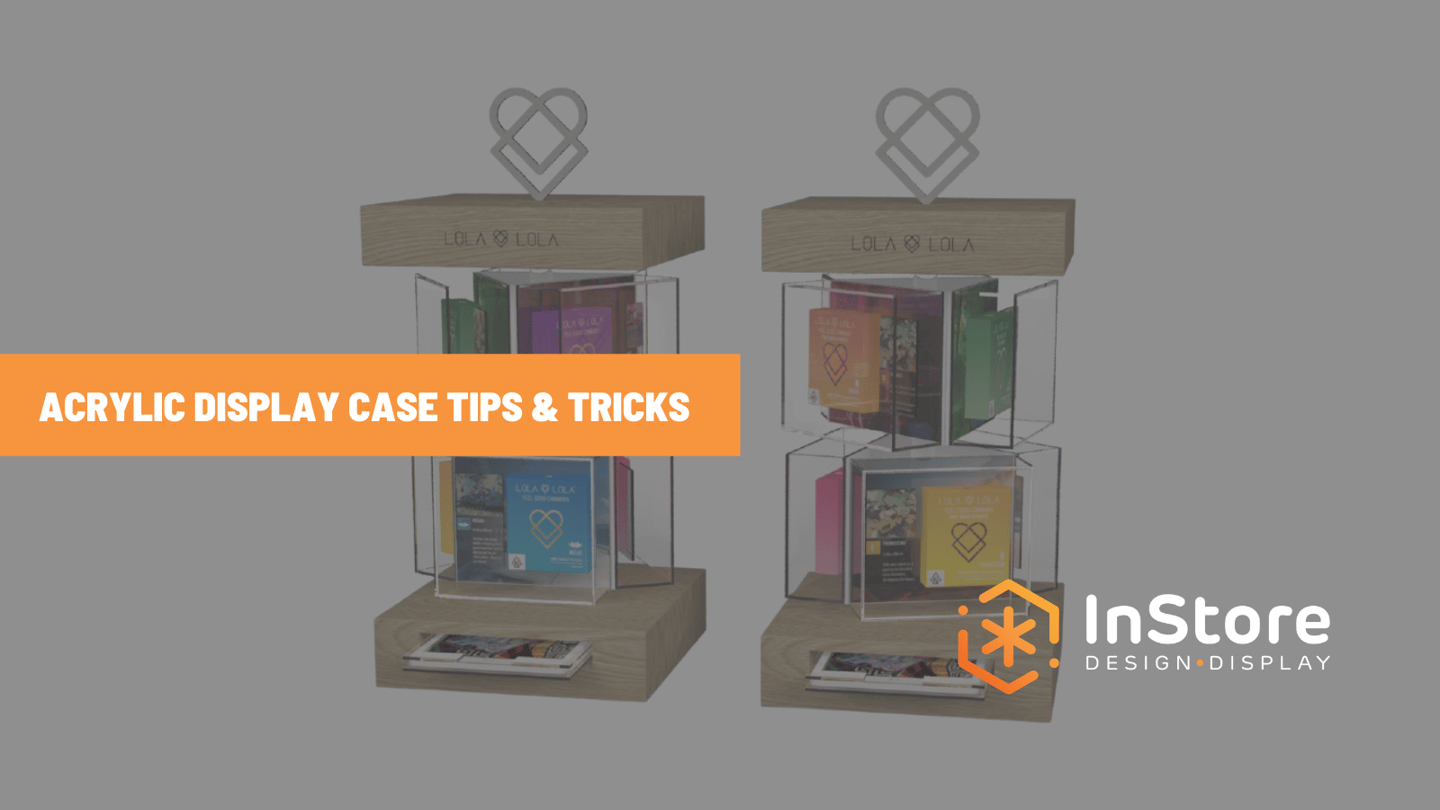
3 Acrylic Display Case Designs to Engage Your Customers
Retail displays can make or break a sale. Before you commit to your next design, it’s important to understand the different types of displays available, how they impact the retail environment, and what their strengths and weaknesses are in relation to your products.
In addition to deciding the type of retail display whether at the point-of-purchase, on an end cap, on inline shelves, in the window, or as part of a focal wall, we need to touch on another key aspect to consider when designing a retail display: the substrates, or materials, you use to manufacture it.
Each substrate has its perks and challenges, and one of the most common substrates used in retail displays is acrylic. Flexible from a design perspective, cheaper than glass or metal, and durable enough to support a semi-permanent lifecycle, acrylic display cases are an engaging and cost-effective option for any brand.
What Are the Pros and Cons of Using An Acrylic Display Case?
Pros
Because acrylic is much lighter than glass, it’s much cheaper in terms of shipping and logistics costs. If you’re building a large display that needs to be shipped across the country, that cost can become substantial with a heavier substrate. Additionally, acrylic can help you achieve an elegant, upscale look while providing great product visibility.
In industries like cannabis or wireless communication, where theft is a rampant challenge, acrylic display cases can help you showcase your products without them being knocked over, moved, broken, or stolen. By building a lockable functionality into your case—whether the case itself is locked or products are kept in a locked storage container beneath the display—you can tell your brand story while protecting your merchandise.
Cons
Casework is typically more expensive than your average countertop display because of the premium look and feel. Sometimes, acrylic cases can become pretty sizeable fixtures as well, and not every brand has the in-store layout to accommodate one of these displays. Before you commit to an acrylic display case, it’s important to understand your real estate restrictions and design something specific to the space you’re allotted.
Additionally, acrylic can get scratched easily. Some scratch-resistant acrylics are available, but if you’re designing a display that will be repurposed or moved around often, other substrates might be more practical. Retailers also need to be careful about the cleaning products they use on acrylic cases; some chemicals can cause marks or shattering.
3 Engaging Acrylic Display Case Designs
1. Featured Products Cases
You might hear “display case” and immediately think “go big or go home.” The truth is, bigger is not necessarily always better. Large cases can be not only expensive, but also quite difficult to fill effectively.
However, you can design your acrylic cases fit-to-size. For example, we built these displays for Lola Lola, a California cannabis brand. We created the first and biggest display to highlight the entire product line—but it didn't always make sense to feature individual products in the same size case, so we created smaller versions for each product too.
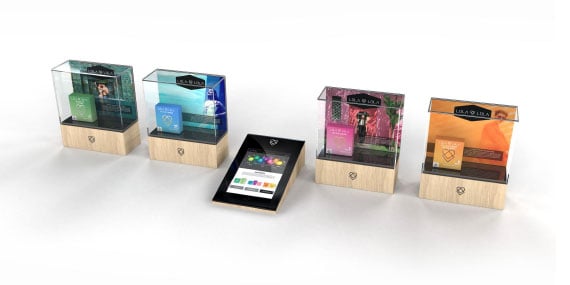
Notice the use of backlit screens and engaging graphics to help emphasize the brand story and educate the customer.
2. Large Acrylic Display Cases
This retail space we designed for EyeSmith Sport & Fashion Optical holds a great example of an effective acrylic display case. Because their products are small and easily shoplifted, the cases guard their products while still giving consumers full visibility to browse.
This case is visible from all sides. In these situations, we use a graphic that speaks to the product and keeps the customer engaged. If you’re designing a large display to sit inside your retail environment, think about where it’s going to sit and how you can maintain the same look and feel as consumers approach it from different sides.
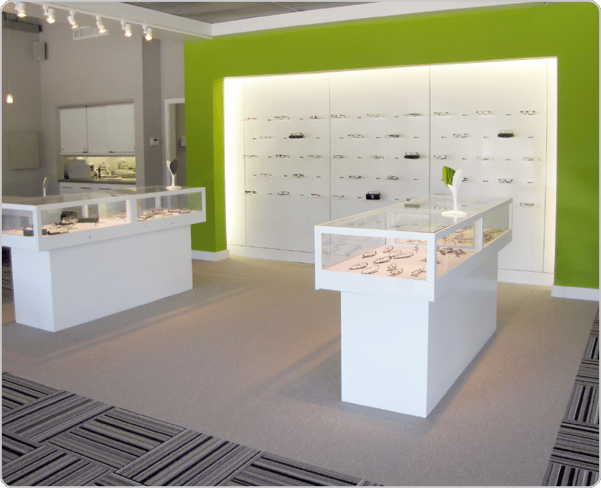
3. Sampling Tables
As we mentioned earlier, theft can be a major issue in the cannabis industry—but giving consumers the opportunity to touch and sample your products can have a wonderful impact on sales.
This cannabis sampling table is an example of an acrylic display case that walks the line between customer engagement and theft prevention. The case is lockable and secure, so consumers cannot touch the products without the help of a salesperson. Additionally, the LED lighting highlights the products and creates a premium look and feel.
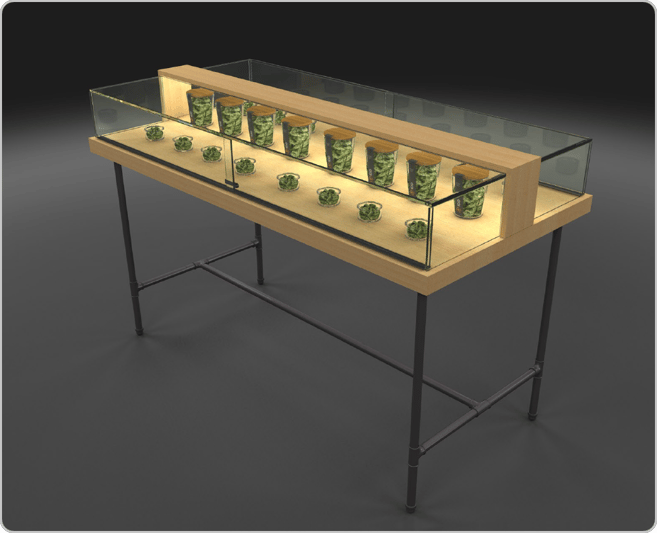
Looking for An Acrylic Display Case for Your Products? Start Here.
Remember, acrylic display cases may be big and impactful, but it’s the little details that will make your products stand out. Get creative with the way you highlight your brand inside the case; use lighting elements to illuminate the product or engaging graphics to educate. Don’t leave your individual products floating in a giant display; leverage every piece of real estate available to you.
If you have questions or need inspiration for your next design, InStore Design Display has all the experience and insight you need. Request a consult to get started on your next design.
Subscribe Here
Stay up-to-date on what's happening on our podcast and blog.



